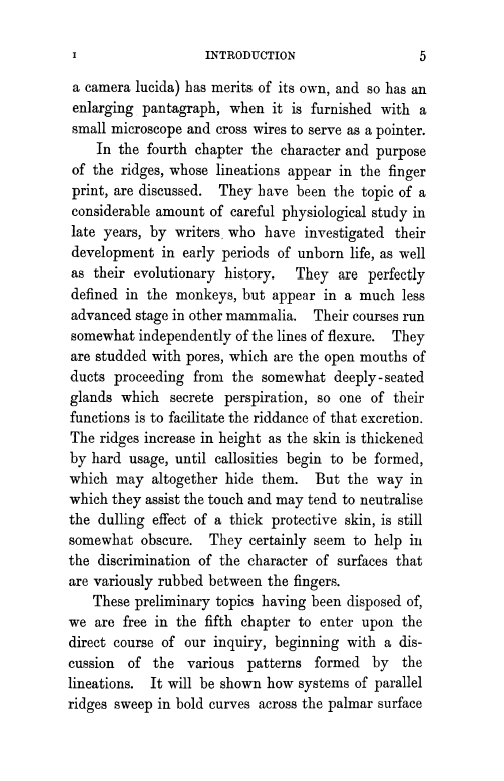| ||||||

OCR Rendition - approximate
I INTRODUCTION 5 a camera lucida) has merits of its own, and so has an enlarging pantagraph, when it is furnished with a small microscope and cross wires to serve as a pointer. In the fourth chapter the character and purpose of the ridges, whose lineations appear in the finger print, are discussed. They have been the topic of a considerable amount of careful physiological study in late years, by writers, who have investigated their development in early periods of unborn life, as well as their evolutionary history. They are perfectly defined in the monkeys, but appear in a much less advanced stage in other mammalia. Their courses run somewhat independently of the lines of flexure. They are studded with pores, which are the open mouths of ducts proceeding from the somewhat deeply-seated glands which secrete perspiration, so one of their functions is to facilitate the riddance of that excretion. The ridges increase in height as the skin is thickened by hard usage, until callosities begin to be formed, which may altogether hide them. But the way in which they assist the touch and may tend to neutralise the dulling effect of a thick protective skin, is still somewhat obscure. They certainly seem to help in the discrimination of the character of surfaces that are variously rubbed between the fingers. These preliminary topics having been disposed of, we are free in the fifth chapter to enter upon the direct course of our inquiry, beginning with a discussion of the various patterns formed by the lineations. It will be shown how systems of parallel ridges sweep in bold curves across the palmar surface
|